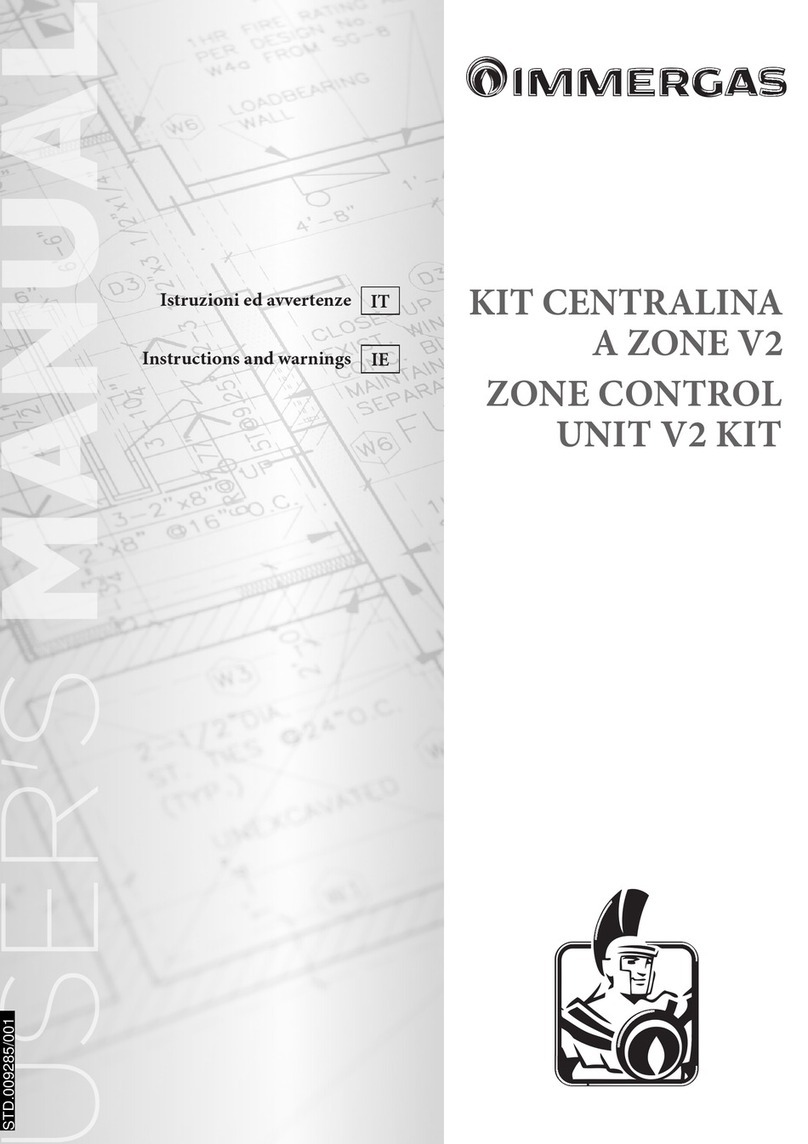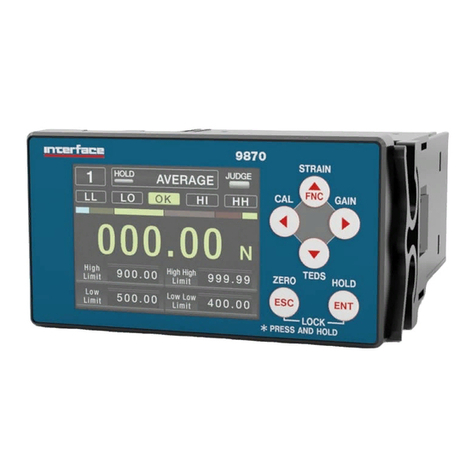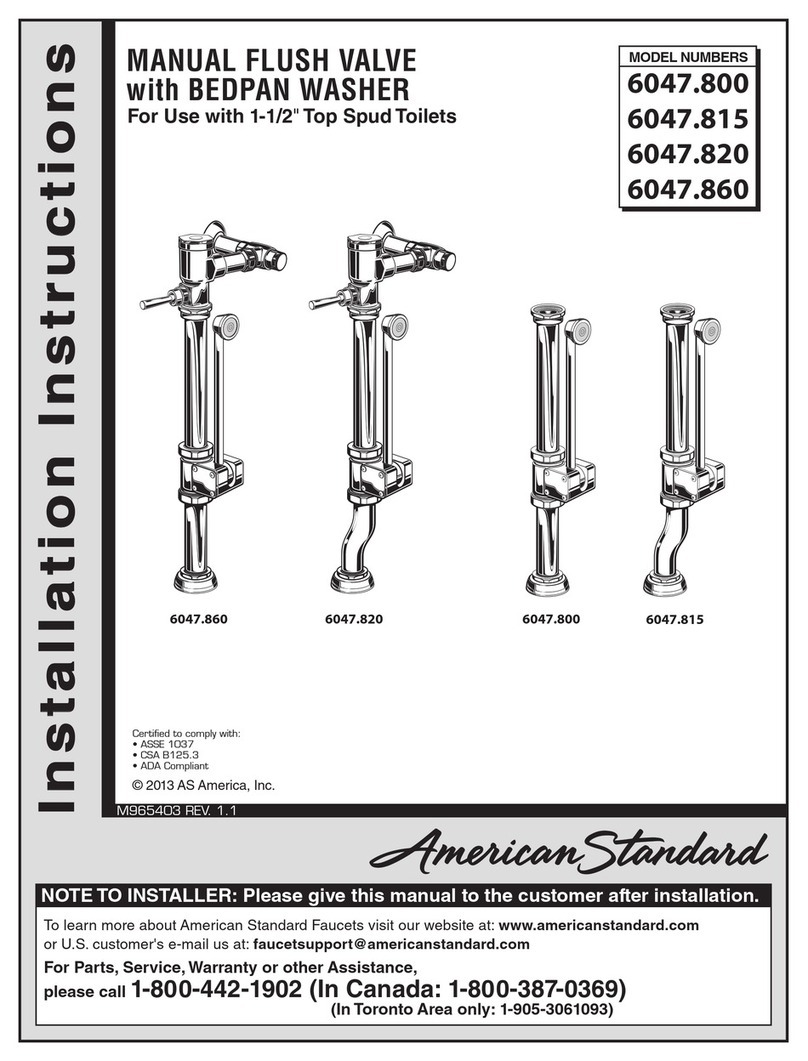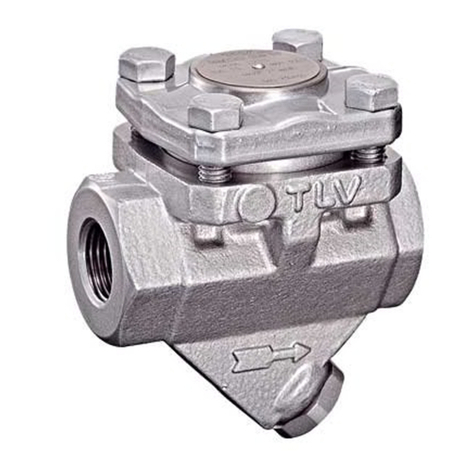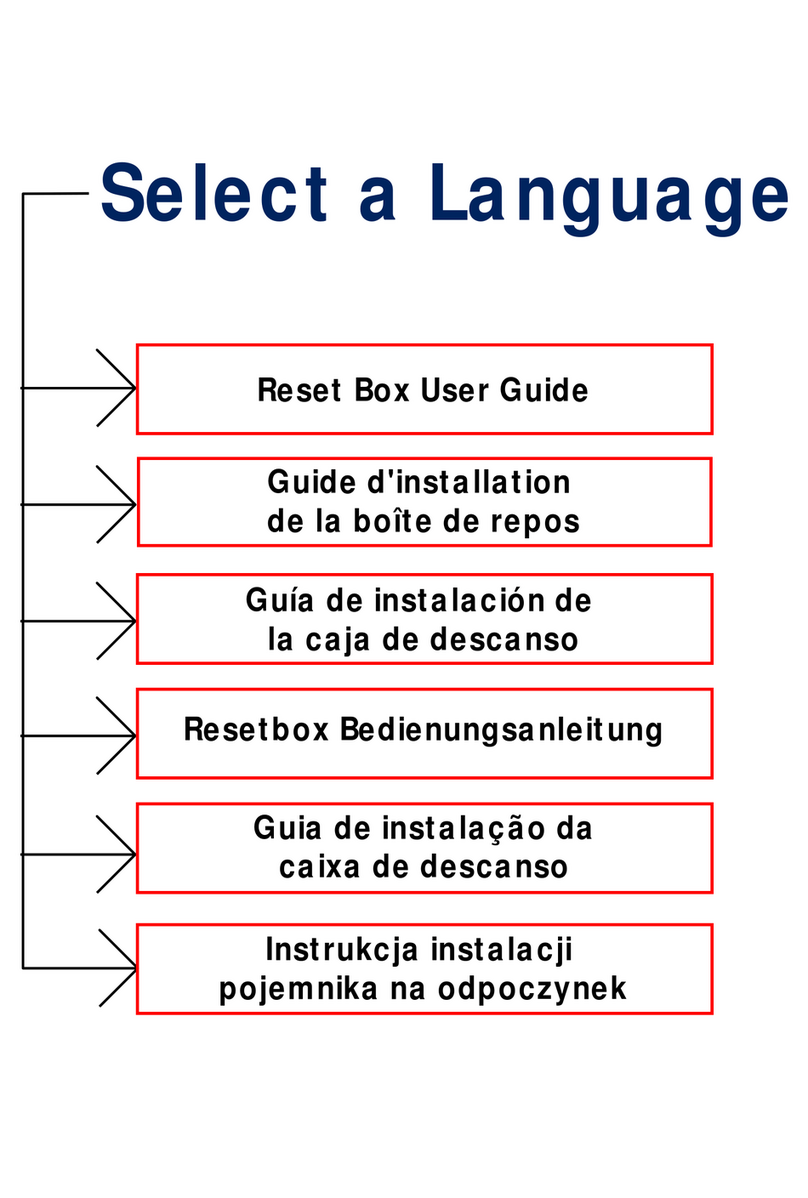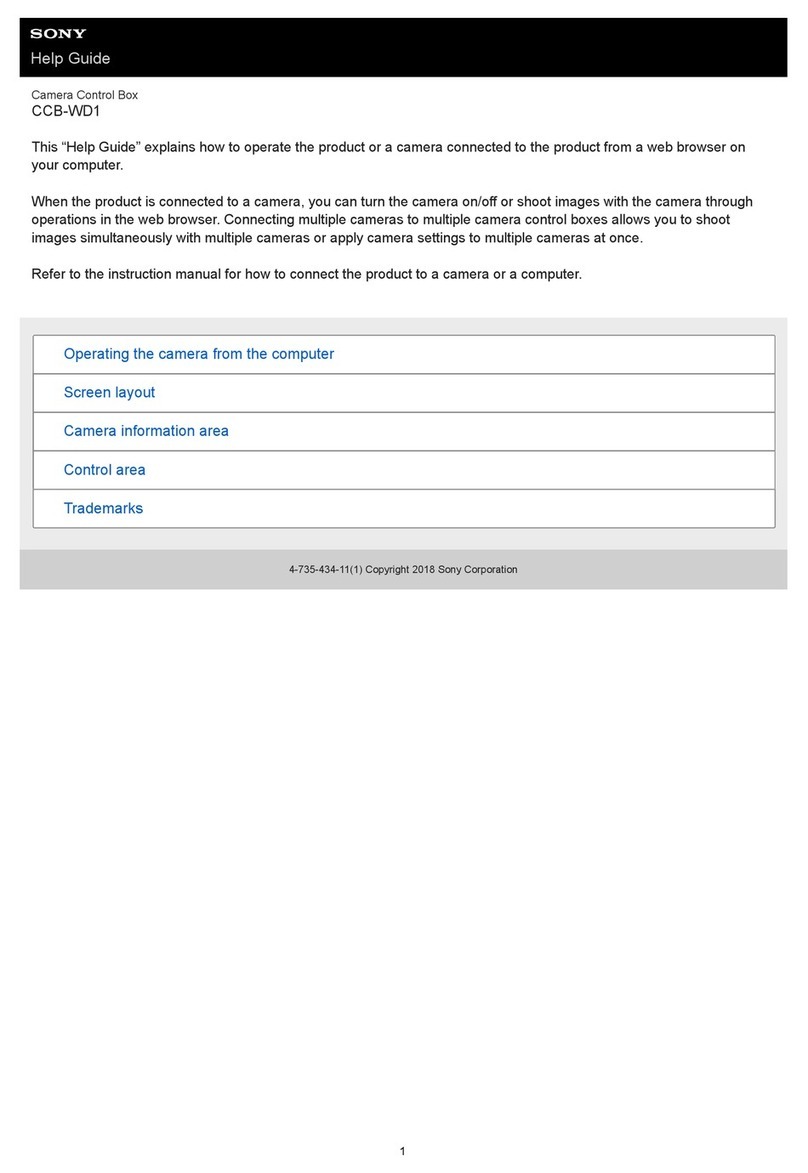Imlab IKA EUROSTAR 400 User manual

2
12
3
4
Fig. 2
Fig. 4
Fig. 8
Fig. 5 Fig. 6
K
L
M
T
U
Q
S
U
Fig. 1
Q
B
M
O
N
C
L
K
A
J
I
H
G
F
E
P
D
EUROSTAR
station
Wireless Controller
(WiCo)
P
RS 232
USB
Temp. Sensor
Fig. 7
X
I
G
Z
H
G
W
V
Fig. 3
H
I
J
G
G

3
Declaration of conformity
Page
Declaration of conformity 3
Note for USA (FCC) 3
Note for Canada (IC) 4
Explication of warning symbols 4
Safety instructions 4
Correct use 7
Unpacking 7
Drive 7
Motor protection 7
Speed – normal operation 8
Speed – overload operation 8
Output shaft 8
Speed display 8
Commissioning 9
Securing 9
Switching on the device 10
Useful information 11
Wireless Controller (WiCo) 11
Interfaces and outputs 19
Maintenance and cleaning 21
Error codes 21
Warranty 22
Accessories 22
Permitted IKA®stirrer tools 22
Technical data 23
Note for USA (FCC)
This equipment complies with Part 15 of the FCC rules. Any changes or modifications not expressly approved by the Manu-
facturer could void the user's authority to operate the equipment. This device complies with Part 15 of the FCC rules subject
to the following two conditions:
(1) This device may not cause harmful interference, and
(2) This device must accept all interference received, including interference that may cause undesired operation.
NOTE:
This equipment has been tested and found to comply with the limits for a Class B digital device, pursuant to part 15 of the
FCC Rules. These limits are designed to provide reasonable protection against harmful interference when the equipment is
operated in a commercial environment.
This equipment generates, uses, and can radiate radio frequency energy and, if not installed and used in accordance with the
instruction manual, may cause harmful interference to radio communications. Operation of this equipment in a residential area
is likely to cause harmful interference in which case the user will be required to correct the interference at his own expense.
We declare under our sole responsibility that this product corresponds to the regulations 2014/35/EU, 2006/42/EC,
2014/30/EU and 2011/65/EU and conforms with the standards or standardized documents EN 61010-1, EN 61010-2-051,
EN 61326-1, EN 60529 and EN ISO 12100.
Bluetooth®module:
Directive: 1999/5/EC Standards: EN 300328, EN 301489-1, EN 301489-17, EN 60950-1
Contents
EN
Source language: German

4
• Uncontrolled reactions can be triggered by mixing the
heated material insuciently or by the energy generated
by selecting a speed that is too high. In case of these
and other increased operational hazards, users must take
additional appropriate safety precautions (e.g. shatter
protection). In any case, when using critical or hazard-
ous materials in your processes, IKA®recommends to use
additional appropriate measures to ensure safety in the
experiment.
For example, users can implement mea-
sures that inhibit fire or explosions or comprehensive
monitoring equipment.
Furthermore, users must make
sure that the OFF switch of the IKA®product can be ac-
cessed immediately, directly and without risk at any time.
If mains switch cannot ensure this
access at all times, an additional
EMERGENCY STOP switch that
can be easily accessed must be installed in the work area.
Safety instructions
Note for Canada (IC)
This device complies with Industry Canada license-exempt RSS standard(s). Operation is subject to the following two condi-
tions:
(1) This device may not cause interference, and
(2) This device must accept any interference, including interference that may cause undesired operation of the device.
This device complies with Health Canada’s Safety Code 6 / IC RSS-210. The installer of this device should ensure that RF
radiation is not emitted in excess of the Health Canada’s requirement.
Explication of warning symbols
Indicates an (extreme) hazardous situation, which, if not avoided, will result in death,
serious injury.
Indicates a hazardous situation, which, if not avoided, can result in death, serious injury.
Indicates a potentially hazardous situation, which, if not avoided, can result in injury.
Indicates practices which, if not avoided, can result in equipment damage.
WARNING
CAUTION
NOTICE
NOTICE
DANGER
•
Read the operating instructions in full before starting
up and follow the safety instructions.
• Keep the operating instructions in a place where it can be
accessed by everyone.
• Ensure that only trained staff work with the device.
•
Follow the safety instructions, guidelines, occupational
health and safety and accident prevention regulations.
•
Because the options for combining products, tools, stir-
ring vessel, experiment and medium are nearly endless,
user safety cannot be ensured simply with design require-
ments on the part of the product. For this reason, it may
become necessary for users to take other precautionary
safety measures. For example, glass device or other stir-
ring vessels that are sensitive to mechanical stress can be
damaged or shattered by an imbalance, increasing the
speed too quickly or too little distance between the stir-
ring element and the stirring vessel. Users can suffer seri-
ous injury from glass breakage or from the freely rotating
stirring element.

5
• Only process media that will not react dangerously to the
extra energy produced through processing. This also ap-
plies to any extra energy produced in other ways, e.g.
through light irradiation.
•
Do not operate the device in explosive atmospheres, with
hazardous substances or under water.
•
Process pathogenic materials only in closed vessels under a
suitable fume hood. Please contact IKA®application support
if you have any question.
•
The device is not suitable for manual operation.
• The high torque developed by the EUROSTAR requires
particular care in the choice of stand, cross sleeve and
anti-rotation element for the agitating vessel.
• Set up the stand in a spacious area on an even, stable,
clean, non-slip, dry and fireproof surface.
• You must ensure that the stirring element is securely
clamped in the chuck!
Remove the chuck key from the
chuck before you switch on the
device.
•
Use stirring shaft protective equipment!
• The agitated vessels used for stirring have to be secured.
Consider on a good stability of the entire structure.
Please pay attention to the
dangerous parts of the equip-
ment in Fig. 8.
•
Protect the device and accessories from bumping and
impacting.
•
Check the device and accessories beforehand for dam-
age each time when you use them. Do not use damaged
components.
•
Safe operation is only guaranteed with the accessories de-
scribed in the ”Accessories” section.
• Always switch the main switch in the OFF position or dis-
connect the power before changing stirring element and
fitting allowed accessories.
• The device can only be disconnected from the mains sup-
ply by pulling out the mains plug or the connector plug.
• The socket for the mains cord must be easily accessible.
•
Socket must be earthed (protective ground contact).
•
The voltage stated on the type plate must correspond
to the mains voltage.
• Please observe the permitted speed for the stirring ele-
ment. Never set higher speed.
• Make certain that the unit is set at the lowest speed be-
fore commissioning; otherwise, the unit will begin run-
ning at the speed set in last operation. Gradually increase
the speed.
• Pay attention when setting the speed to any imbalance
of the stirrer tools and possible spraying of the medium
to be stirred.
Never operate the device with the
stirrer tools rotating freely. Ensure
that parts of the body, hair, jewelry
or items of clothing cannot be trapped by the rotating
parts.
The operation of a free rotating
shaft end is dangerous. There-
fore, for safety reason, only insert
through the stirring tool over the upper edge of housing
at standstill.
Wear your personal protective
equipment in accordance with the
hazard category of the medium to
be processed, there is a risk of:
- splashing of liquids
- projectile parts
- body parts, hair, clothing and jewelry getting caught.
Beware of the risk of:
- flammable materials
-
glass breakage as a result of mechanical shaking power.
Reduce the speed if:
-
the medium splashes out of the vessel because the
speed is too high
- the device is not running smoothly
-
the device begins to move around because of dy-
namic forces
- an error occurs.
Do not touch rotating parts
during operation!
•
There may be electrostatic activity between the me-
dium and the output shaft which could cause a direct
danger.
• After an interruption in the power supply or a mechanical
interruption during a stirring process, the unit does not
restart automatically.
• It is important to note that the surfaces of the motor
(cooling fins) and certain parts of the bearing may get
very hot during operation.
• Never cover the ventilation slots or cooling fins on the
motor or on the device.
• Avoid knocking and impacting on the lower end of the
shaft and the chuck gear teeth. Even minor, invisible dam-
age can lead to imbalance and uneven shaft action.
• Ensure that the stand does not start to move.
NOTICE
NOTICE
WARNING
WARNING
DANGER
DANGER
CAUTION
CAUTION

6
• The lithium polymer battery pack must only be used and
charged in IKA®products designed for use with this bat-
tery pack.
• When the battery pack is inserted it should slide in easily
and without resistance. Do not force it.
• If the battery pack is removed for an extended period of
time, store it in a sealed plastic bag to prevent short-circu-
iting due to moisture or contact with metal components.
• The operating temperature range of the battery pack is
from 0 °C to + 45 °C. Note that the battery pack capacity
will be reduced at temperatures below 20 °C.
•
Only the rechargeable battery types recommended in the
technical data may be used in the device!
Do not charge batteries that have leaked or that are
discolored, deformed or damaged in any other way.
Disposal instructions:
• When disposing of the IKA
®
battery pack, please tape over
the contacts with adhesive tape to prevent short-circuiting
due to moisture or contact with metal components. Short-
circuiting may result in an explosion.
• Do not throw used battery packs into your household
waste. Dispose of them properly in accordance with statu-
tory regulations.
End users are obliged by law to return all used dis-
posable and rechargeable batteries. Throwing them
into the household waste is prohibited. Disposable/
rechargeable batteries containing harmful substances are
marked with this symbol to indicate that they may not be
disposed of as household waste.
• You can return used disposable and rechargeable batter-
ies free of charge to your local authority collection site or
to any battery retailer. In doing so you will be complying
with statutory regulations and helping to protect the en-
vironment.
• Batteries must be disposed of in accordance with local
and national regulations.
If during operation the battery
pack RB 1 (rechargeable battery)
becomes fully discharged, the de-
vice will continue to run or is shut down depending on the
value settings for exceeding the time and safety speed. If
the device is set so that it continues to run when the bat-
tery of the Wireless Controller (WiCo) is fully discharged,
the only means of switching the station off are the safe
button and the off switch!
Please note the following
safety instructions for the
battery pack RB 1 (recharge-
able battery):
• Keep the battery pack out of reach of children at all times.
• Store the battery pack in a cool, dry place.
• Never throw the battery pack into a fire. Keep it away
from direct sunlight and temperatures above 60 °C. High
temperatures will damage the battery pack and render
it unusable. Temperatures above 100 °C may cause it to
explode.
• Never throw the battery pack into water or expose it to
moisture. Water may lead to a short-circuit, causing the
battery pack to explode.
•
Do not deform or crush the battery pack or damage it in
any other way. This can cause battery fluid to leak and/or
the battery pack to explode.
• When not in use, keep battery packs away from pa-
perclips, coins, keys, nails, screws or other small metal
objects which could cause the contacts to be bridged.
Short-circuiting may result in an explosion.
• Explosion of a battery pack may release battery fluid and
cause a fire.
•
Imbalance of the output shaft, the chuck and in particu-
lar the stirring tools can lead to uncontrolled resonant vi-
brational behavior of the device and the whole assembly.
Glass apparatus and stirrer containers can be damaged
or shattered by this. It can cause injury to the operator,
also can damage the rotating stirring tool. In this case
exchange the stirring tool for one without imbalance or
remedy the cause of the imbalance.
If there is still imbal-
ance, return it to the dealer or the manufacturer along
with a description of the fault.
• If the device is operated too long in overload or if the
ambient temperature is too high, the device switches off
permanently.
• The machine must only be opened by trained specialists,
even during repair. The device must be unplugged from
the power supply before opening. Live parts inside the
device may still be live for some time after unplugging
from the power supply.
Covering or parts that are capable
of being removed from the unit
without accessory equipment
have to be reattached to the unit for safe operation in or-
der to prevent, for example, the ingress of fluids, foreign
matter, etc..
NOTICE
NOTICE
NOTICE

7
Unpacking
• Unpacking:
- Unpack the device carefully.
- Any damage should be notificed immediately to the
shiping agent (post, rail or logistic company).
• Delivery scope:
- EUROSTAR 400 control stirrer with a Wireless Controller
(WiCo)
- extension arm
- 2 hexagonal socket screw
- hexagon socket offset screw key
-
chuck key
-
Pt 1000 temperature sensor
-
protective cover
- Wireless Controller holder
- OS 1.0 power supply unit
- USB cable micro A – micro B 2.0
- USB cable A – micro B 2.0
- user guide
- warranty card.
Correct use
• Use:
For mixing/stirring liquids with low and high viscosities by
various stirring tools.
Intended use: Stand device (chuck points down)
• Range of use (indoor use only):
- Laboratories - Schools
- Pharmacies - Universities
• Wireless remote control:
Before using the wireless link between the Wireless
Controller (WiCo) and the laboratory device, first check
whether your region is included in the radio communica-
tions approval for the device. If it is not, remote control
can also be performed using a USB cable.
This device is suitable for use in all areas except:
- Residential areas
- Areas that are connected directly to a low-voltage supply
network that also supplies residential areas.
The safety of the user cannot be guaranteed:
- If the device is operated with accessories that are not sup-
plied or recommended by the manufacturer
- If the device is operated improperly contrary to the manu-
facture’s specifications
- If the device is operated improperly contrary to the manu-
facturer’s specifications.
Drive
The rotary knob (B, see Fig. 1) of the Wireless Controller (WiCo) allows the speed of the stirrer to be adjusted over the entire
speed range.
OS 1.0 power supply unit (for Wireless Controller (WiCo)):
Adapter
England
Adapter
USA, China
Adapter
Australia
Adapter
Europe, Switzerland
Motor protection
The stirring device is suitable for continuous operation. The
motor current is limited electronically. The device has an
anti-stall and anti-overload system.
If a fault occurs, a safety circuit immediately switches off
the motor permanently through a relay in the power board.
A fault occurs if the safe functioning of the device is com-
promised.

8
Speed – overload operation
In order to overcome peaks in the load such as arise when a
solid or viscous medium is added, the stirrer can be run for
a brief period at twice its rated power. When running in the
overload range (for instance if the viscosity has increased at
a particular stage of the process) the speed will be reduced
to a degree sucient to keep the torque on the stirrer shaft
within the rated torque of the device.
The speed is continually adjusted whilst the stirrer is running
to correspond to the operating conditions and so that it
matches the set speed as closely as possible.
Overload status 1:
The device is already running within the overload range,
whereby the actual speed does not match the set speed.
This condition is maintained as long as neither the motor
current nor the temperature exceeds their permissible limit
value.
This is indicated by the torque value flashing in the display.
Once the load reduces to a value within the normal range
again, the torque value ceases to flash.
Overload status 2:
If the device is subjected to a fluctuating load which causes the
torque to be more than double the normal torque, the actual
speed of the stirrer shaft is quickly reduced to zero.
Message in the display: Error code 4 (see “Error codes” section).
Output shaft
The clamping chuck and output shaft permit clamping IKA®
recommend stirrer tools (see section “Permitted IKA®Stirrer
tools“). The output shaft is designed as a hollow shaft and
the opening on the top side of the housing is closed with a
plastic cover. When the stirrer cover is opened, it is possible
for stirring shaft to be pushed out over the top edge of the
housing at standstill, e.g. during changing container.
For safety reason, the stirrer cover must be pushed back
into the opening of the housing so that it is properly closed.
This is the only way to ensure that working with the unit is
safe and that media cannot enter the device.
Please see section “Safety in-
structions“!
Speed display
The speed is set using the rotary knob(B, see Fig.1) on the
front of the Wireless Controller (WiCo).
The speed is displayed directly in revolutions per minute
(rpm) in the display (C, see Fig.1) of the Wireless Controller.
Speed – normal operation
Speed - regulated (no variation in speed):
The speed is monitored and regulated by processor con-
trolled. The target speed is constantly compared with the
actual rotation speed value of the output shaft and varia-
tions corrected. This guarantees a constant speed even if
the viscosity of the substance being stirred changes.
Fluctuations in mains voltage within the permitted toler-
ance range have no effect on the quality of regulation and
constancy of speed.
The speed is set using the front knob (B, see Fig. 1). Dur-
ing normal operations the speed value on the display (C,
see Fig. 1) corresponds to the speed of the output shaft in
revolutions per minute (rpm).
NOTICE

9
Accessories must be assembled according to the following
assembly instructions (Fig. 2 to Fig. 7).
If above conditions are met, the device
is ready for operation after plugging in
the mains plug.
Commissioning
Assemble the overhead stirrer and all necessary accessories
on a stable, even, non-slip surface. The EUROSTAR over-
head stirrer must be secured to a stable stand (e.g. R 2722
or R 2723) with a cross-sleeve (e.g. R 271). The stirring ves-
sel must always be securely fixed for safety reasons. You
must also ensure that the mounting device (stand) is set
up in such a way that it is not liable to topple and does not
start to move during the stirring procedure.
Securing
Securing the extension arm to the overhead stirrer
Diagram (see Fig. 2)
Ensure that the extension arm is fitted securely.
Vibration may cause the screw to become loose. It is there-
fore necessary for safe use to occasionally check that the
extension arm is attached securely. Tighten the hexagonal
socket screw as required.
Securing the overhead stirrer to the stand
Diagram (see Fig. 3)
First secure the cross sleeve (H) to the stand (I). Then secure
the extension arm (J) of the overhead stirrer in the open side
of the cross sleeve which is facing upwards. Once you have
set the position required for the stirring procedure, firmly
tighten the two clamping bolts (G).
Check that the stirrer is held in position firmly prior to each
use and also at regular intervals. The position of the stirrer
must only be adjusted when the equipment is stationary
and the power supply is disconnected.
Securing the stirring element using the chuck
Diagram (see Fig. 4)
Slide the stirring element (M) into the chuck (L). Tighten the
chuck firmly using the chuck key (K).
The stirring element must only be changed when the equip-
ment is stationary and the power supply is disconnected.
Securing the stirring shaft protector
Diagram (see Fig. 5)
Use a stirring shaft protector (Q), e.g. R 301, to provide pro-
tection against injury when working with the device.
Use the bolts (U) to attach the plastic half-shell pieces to the
stirrer (T), as shown in Fig. 5. The screw (S) can be used to
adjust the length of the stirring shaft protector.
Check that the stirring shaft protector is held in position
securely prior to each use and also at regular intervals. The
position of the stirring shaft protector must only be adjust-
ed when the equipment is stationary and the power supply
is disconnected.
Securing the mixing vessel to the stand
Diagram (see Fig. 7)
First fix the cross sleeve (H) to the stand (I).
Then attach the bracket (Z) of the strap clamp in the open
side of the cross sleeve which is facing upwards according
to the position of stirrer and the mixing vessel, firmly tighten
the two clamping bolts (G).
Clamp the mixing vessel (V) with the flexible clamping band
(W) and secure the flexible band (W) by means of the clamp-
ing lever (X).
Attachment of the Wireless Controller (WiCo) to the
stirrer
Diagram (see Fig. 1)
Attach the Wireless Controller (WiCo) to the charging con-
tact provided on the station, and bolt it to the EUROSTAR
station with the screw (P).
Connection of the temperature sensor, USB and
RS232 cables to the stirrer
Diagram (see Fig. 6)
The USB, RS 232 or temperature sensor cable should be
plugged into the appropriate port after the covers have
been removed as shown in Fig. 6.
Once the EUROSTAR 400 control has been connected to the
PC using the USB data cable, it will then transmit informa-
tion to the Windows operating system to tell it which device
drivers are required. Windows will then either:
- Load the driver
- Install the driver automatically, if it is not already installed
- Prompt the user to perform a manual installation
Open
http://www.ika.com/ika/lws/download/usb-driver.zip
Charging the RB 1 battery pack (rechargeable battery)
The battery pack of the Wireless Controller can be charged
by any of the following means:
- on the EUROSTAR station
- via a USB cable at the PC or station
- via an OS 1.0 power supply unit.

10
Switching on the device
Check whether the voltage given on the type plate corre-
sponds to the available mains voltage.
The socket used must be earthed (fit-
ted with earth contact).
If these conditions have been met, the machine is ready for
operation when the mains plug is plugged in.
If these conditions are not met, safe operation is not guar-
anteed and the machine could be damaged.
Before the first time to use the EUROSTAR stirrer, fasten the Wire-
less
Controller (WiCo) to the station with the screw, so that
the rechargeable battery (RB1 battery pack) in the Wireless
Controller can be charged.
After the device has been switched on at the main switch (A,
see Fig. 1) the device name and software version appear in the
display (C, see Fig. 1) of the Wireless Controller (D, see Fig. 1).
After a few seconds a signal sounds, the last setting of speed
and speed range is displayed (mode B).
Once the working screen is displayed, the stirrer is ready for
operation.
If the Wireless Controller is switched on and is not attached to
the stirrer (the station), the green LED bar (G, see Fig. 1) and
the green Bluetooth
®
LED (F, see Fig. 1) on the stirrer (station)
will light up. Make sure that the speed selected is appropriate
for the trial run. If in doubt, use the rotary knob (B, see Fig. 1)
to select the slowest speed. To start or stop the stirrer function,
press the rotary knob (B, see Fig. 1).
The controls of the Wireless Controller can be disabled by
pressing the key (L
, see Fig. 1
), so that no inadvertent chang-
es are made while the device is running (the key symbol
appears in the display).
Pressing the key (L) a second time enables the controls
again (key symbol disappears from the display).
In emergency the stirrer (station)
can be switched off by pressing
the “safe Stop“ key (I, see Fig.1)
on the front of the stirrer. In this case the LED bar (G, see
Fig.1) changes color from green to red, and flashes.
A mes-
sage appears in the display, advising that the EUROSTAR stirrer
(station) has been forcibly switched off. To restart the stirrer,
switch the main switch (A, see Fig. 1) of the EUROSTAR stirrer
(station) OFF and ON.
If the Bluetooth®function of the Wireless Controller is ac-
tive , the user can use the Bluetooth®search key (H) to
search for the Wireless Controller.
A beep signal will be audible even if the Wireless Controller
is switched off.
• Speed setting:
You can use the rotary knob (B, see Fig. 1) to pre-set the re-
quired speed before you start the device. If you then press the
rotary knob(B) the device starts at the speed you set. When
a change is made to the speed, the rated speed is shown in
the display (C, see Fig. 1). When the device is stopped, the
key (K, see Fig. 1) can be used to switch between the two
speed ranges (Iand II). When in standby mode, the display
(C) shows the set speed.
The stirrer has two different speed ranges:
Range I: low speed, high torque.
Range II: high speed, low torque.
• Correct procedure for changing the speed range:
- Switch the device off at the rotary knob (B, see Fig. 1)
- Switch the speed range with key (K, see Fig. 1)
- Change the speed with the rotary knob (B)
- Switch the device on at the rotary knob (B)
- The speed can be varied at any time in operation
- The speed appears in the display (C, see Fig. 1).
Changing the RB 1 battery pack in the Wireless Con-
troller
Please comply with the relevant
safety instructions in the "Safety
instructions" section for the RB 1
battery pack!
NOTICE
NOTICE

11
Useful information
The EUROSTAR 400 control stirrer is controlled via a Wire-
less Controller (WiCo). If the Wireless Controller is attached
to the EUROSTAR station, data exchange between the stir-
rer (station) and Wireless Controller is performed via the
contacts (E, Q, see Fig. 1). "Home" symbol appears on
the display of the Wireless Controller. If the Wireless Con-
troller is connected to the stirrer (station) via a USB (Univer-
sal Serial Bus) cable, the symbol appears.
If the Wire-
less Controller is neither bolted to the EUROSTAR station nor
connected to the stirrer (station) via a USB cable, the data
exchange between the stirrer and Wireless Controller is per-
formed via Bluetooth®.
In this case the Bluetooth®symbol l
is displayed.
Depending on the structure of the building, the Wireless
Controller can be operated at a distance of up to 150 m from
the EUROSTAR station, using the Bluetooth
®
connection.
The Wireless Controller can be attached to the stirrer (sta-
tion), or can be installed in a safe place easily accessible by
the user while the stirrer is running.
If the Wireless Controller is attached to the EUROSTAR sta-
tion, the rechargeable battery is automatically recharged via
the contacts (Q, see Fig. 1). The rechargeable battery can
also be charged via the USB port of the Wireless Controller
(see “Charging the RB 1 battery pack“ in the “Securing“
section).
If the stirrer (station) generates
vibration, the Wireless Controller
must be bolted to the stirrer using
the screw (P, see Fig. 1), or positioned remotely from the
stirrer (station) whilst it is running.
Wireless Controller (WiCo)
Controls of the Wireless Controller (WiCo):
Item Name
M ON/OFF key: Switching the Wireless Controller on and off
L Lock key: Key disable and rotary/push knob disable
N Menu key: Press it once: main menu is displayed
Press it a second time: back to the working screen
B
Rotary/push knob:
Navigation, selecting and changing the settings in the menu
O Back key: Return to the previous menu level/reset the torque
K Gear key: Change the gear in different speed/torque ranges
Note: Can only change the gear in the standby mode of the station.
Working screen at the time of delivery:
Note: The wireless symbol appears only
when the stirrer (station) is switched on.
B
300
99:00:00
actual rpm
rated rpm
45.0 ºC
100 Ncm
Torque:
Temp:
Timer:
00:00
PC
controlled
LIMIT 2000
Explanation of symbols on the working screen:
The symbols displayed change depending
on the status and settings of the Wireless
Controller. The screen below shows the
most significant symbols on the working
screen.
The start screen appears for a few seconds
after the Wireless Controller is switched on.
The device name and the software version
are displayed. After this, the following work-
ing screen appears automatically in the dis-
play.
B
0
0
actual rpm
set rpm
Torque: 0Ncm
ResetTorque
JBack
Timer:
00:00:00
,
,
NOTICE
B
M
O
N
L
K
Bluetooth®:
This symbol means the EUROSTAR station and the Wireless
Controller are communicating via Bluetooth®.
The symbol no longer appears if no Bluetooth®communica-
tion is being performed.
Lock:
This symbol means that the function of the keys and of the
rotary knob for controlling the Wireless Controller are dis-
abled.
The symbol no longer appears if the functions are enabled
once again by pressing the lock key a second time.
BOperating mode:
This symbol indicates the operating mode currently selected
(A, B, C).
USB:
This symbol means the EUROSTAR station is communicating
via a USB cable.
The symbol no longer appears if no USB cable is being used
for communicating with the station.

12
Home:
This symbol means that the Wireless Controller is connected
to the EUROSTAR station and is communicating with the EU-
ROSTAR station via the charging contacts.
The symbol no longer appears if the Wireless Controller is
disconnected from the EUROSTAR station.
Battery pack (rechargeable battery):
This symbol indicates the charging status of the RB 1 battery
pack within the Wireless Controller.
The charging symbol appears if the Wireless Controller
- is connected to a PC via a USB cable
- is connected to a EUROSTAR station via a USB cable
- is connected to the power supply unit OS 1.0 via a USB
cable
- is connected to the EUROSTAR station via the charger contacts.
Gear ratio (speed range):
The stirrer has two different speed ranges:
Range I: low speed/high torque.
Range II: high speed/low torque.
LIMIT Speed limit:
This symbol indicates upper speed limit set for the stirrer. The
setting of the EUROSTAR in delivery status is the maximum
permissible speed of the stirrer.
Navigation control
elements in the menu
Navigation menu and menu structure:
Navigation menu:
Navigation menu: ¼Press the “Menu“ key (N) and turn the rotary/push knob (B)
»Press the "Back" key (O) or the "Menu" key (N)
Note: If you press the “Menu“ key (N), the system skips directly back to the working screen.
If you press the “Back“ key (O), the system skips back to the previous display.
Back Back Back
Menu
Menu
Menu
Tempe
Stirring
Torque Calibration
Stirring
Intermittent Mode
Torque Display
Torque Limit
Speed Limit
hStirring
Speed Limit
Speed Limit
OK
1500
rpm
B
0
0
actual rpm
set rpm
Torque: 0Ncm
Reset Torque
JBack
Timer: 00:00:00
)Press the menu key (N).
)Select the menu by turning the rotary/push knob (B) to the right or left to select the desired
menu or sub-menu, which can then be selected by pressing the rotary/push knob.
)Press or turn the rotary/push knob (B) again to select the desired menu option and edit the
values or settings, or activate/deactivate a function.
)Turn the rotary/push knob (B) to OK or press the "Back" key (O) or "Menu" key (N) to end the
procedure and return to the previous menu.
Note: The menu option activated is highlighted yellow in the display.
,
Temperature sensor:
This symbol appears when the temperature display is active
in the display.
PC
controlled PC control:
This symbol means that either the EUROSTAR station or the
Wireless Controller is connected to a computer and the stir-
rer is being controlled from the computer.
PR
controlled Program control:
This symbol means EUROSTAR is controlled by user de-
fined program.
Continuous mode:
This symbol indicates that the stirrer is in continuous mode
and indicates the direction of rotation of the stirrer.
00:00 Intermittent mode:
This symbol indicates that the stirrer is in intermittent mode.
B
O
N

Menu structure:
Factory settings
Menu
13
Stirring
Torque Display activated
Torque Calibration -
Torque Limit 400 Ncm
Run/StopIntermittent Mode -
Stop Time 00:00 [mm:ss]
Run TimeInterval 00:00 [mm:ss]
Deutsch -
... -
Display Torque activated
Timer activated
Temperature -
B activated
C -
Operating Mode A -
Display -
Timer Set 00:00:00 [hh:mm:ss]
Display -
Temperature Probe Temperature -
Programs Program 1 -
Program 2 -
... -
Factory Settings
Settings Languages English activated
Safety Time Out yes
Safe Speed yes
yesInformation Stirring Max Speed
Max Torque yes
Interval Run yes
Interval Stop yes
Software Version yes
Operating Mode yes
Station Version yes
Firmware Update Info yes
Units Temperature ºC activated
ºF -
Display Background Black activated
White -
Firmware Update Info -
Brightness Standard Mode 60 %
Battery Mode 20 %
Key Tone -
Sound Volume 100 %
Bluetooth activated
Remote Control WiCo activated
Other -
Communication Device Name
EUROSTAR 400 Wi
Safety Time Out 00:30 [mm:ss]
Password 000
Safe Speed 100 rpm
Vibration sensor level 0
Vibration Sensor
Speed Limit Manual 2000 rpm
Anchor stirrer -
Paddle stirrer -
... -

14
Menu (details):
Stirring:
Speed Limit:
The ”Manual” menu allows the user to set the desired maxi-
mum speed limit for the EUROSTAR 400 control stirrer. The
initial setting is the maximum permissible speed of the stir-
rer. If the user changes this setting, the Wireless Controller
saves the new value for future stirring tasks.
If the “Speed Limit” has been changed, then the speed can
be adjusted only within the new range.
Under the stirrer elements type, the maximum speed limit
is set automatically by the selected stirrer element, e.g. the
maximum speed is limited to 1000 rpm when anchor stirrer
R 1330 is selected.
For detailed information, refer to section "
Permitted IKA®
stirrer tools
".
Torque Limit:
The ”Torque Limit” menu allows the user to set the desired
max. deliverable torque limit.
The initial setting is the maximum permissible torque of the
device.
If the user changes this setting, the Wireless Controller
saves the new value for future stirring tasks.
If the “Torque Limit“ has been changed, the stirrer can de-
liver an operating torque only up to the value specified as
the maximum torque limit.
Note: The torque limit can be overload for about 10 sec-
onds. This is necessary to cater for stirring tasks which re-
quire metering and feeding additives.
Torque Display:
The ”Torque Display” menu allows the user to specify that
the torque is shown in the display. A tick shows that the
option is activated.
Note: Pressing the "Back" key while the device is running
resets the torque to 0 Ncm. The Δ symbol then appears in
the display in front of the torque value.
Symbol rotation
direction
Chuck rotation
direction Graph
CW
Time
Speed
Factory setting:
continuous mode
CW
Time
Speed
Function “Run/Stop“ is activated:
The run time and stop time can be set separately.
∞/CW...
Run-Stop-Run/CW...
Intermittent Mode:
Fig. 9
Torque Calibration:
This menu allows the torque to be calibrated. All torque
resulting from bearing friction is excluded from the torque
calculation. This is performed with no stirrer element at-
tached. A duration of 30 sec. and speed of 50 rpm are set
automatically.
Note: Calibration can be performed only when a USB cable
is being used. For this, remove the Wireless Controller from
the station (see "Interfaces and outputs" section, figure “Con-
nection capability of Wireless Controller to the EUROSTAR sta-
tion“).

15
Temperature:
In the ”Temperature” menu the user can specify that the
temperature sensor is displayed on the display/working
screen. A tick shows that the option is activated. The pre-
condition for this is that a temperature sensor is connected
to the EUROSTAR 400 station. If no temperature sensor is
connected, or an error is present or the temperature rises
above 350 °C, three dashes are shown as the temperature
value.
Note: Please comply with the temperature measurement
range of the external temperature sensor specified in the
"Technical data" section. The temperature display can be in
either °C or °F (see the ”Settings“ menu).
Timer:
In the ”Timer” menu the user can specify that the timer is
displayed on the display/working screen. A tick shows that
the option is activated. This setting allows the user to spec-
ify the actual time for the stirring procedure.
A default time can also be set for the timer. This setting al-
lows the user to start the stirring task for a standard time.
The device stops automatically after expiry of the set time,
and the set time used for the stirring procedure appears in
the display.
Note: The user can stop the stirring function before expiry
of the set time. In this case the countdown of the timer is
interrupted.
Operating Mode:
Operating Mode A:
In this operating mode, the set speed is not saved when the
current run comes to an end or the device is switched off.
Operating Mode B:
In this operating mode, the set speed is saved when the
current run comes to an end or the device is switched off,
and the value can be changed.
Operating mode C:
In this operating mode, the set speed is saved when the
current run comes to an end or the device is switched off,
and the value cannot be changed.
Display:
In the “Display“ menu the user can specify what informa-
tion will be displayed on the main screen.
Note: If the ”Torque”option is activated, by pressing the
”Back“ key the user can reset the current torque to 0 Ncm
as a reference value. At the same time the Δ appears in
front of the Ncm unit.
Programs:
Under menu "Programs", 5 user-defined speed (rpm)-time
profiles can be created. In addition, the user could define
the intermittent mode is activated or not in the programs.
If the intermittent mode is activated, the run time/stop time
value from "Intermittent Mode" setting will be taken.
Note: If user need to activate the intermittent mode in one
segment of a program, he should set the "Run time/Stop
time" in menu option "Interval", meanwhile activate the
"Run/Stop" function in menu option "Intermittent Mode"
(see section "Stirring").
Once a programs has been selected, the following options
are available.
Start: Start the selected program upon request.
When the selected program is started by pressing on menu
option "Start" with rotary/push knob, screen reminds the
user to confirm the program control. Press "OK" with ro-
tary/push knob to start the program control.
Edit: Edit the selected program parameters.
Start to edit the selected program parameters by pressing
on menu option "Edit" with rotary/push knob. The user can
edit, delete or insert one selected program segment in the
program.
When user edits the program time for at least one segment,
tick (√) for respective program will appear.
Delete: Deletes the selected program.
If a selected program is deleted by pressing on menu option
"Delete" with rotary/push knob, all the program param-
eters will be emptied. The tick (√) disappears.
Details for editing the program:
When a program is being edited, following screen appears.
PROGRAM 1
Seg
No.
rpm Time
hh:mm
Interm.
Mode
Edit Delete Insert
1
2
3
4
5
0 00:00 No
In this program, user can define up to
5 segments. The selected segment is
highlighted. Then, the user can edit, de-
lete or insert a segment in this program.
When the "Back" key is pressed after
editing, the program is save automati-
cally.
Edit:
When the highlighted "edit" symbol appear on the right top
of the screen, the user could change the speed (rpm), time
value or intermittent mode setting.
Note: The speed (rpm) value can be changed during the
speed limit range of the device. The time can be set from 1
minute to 10 hours.
Delete:
When delete a highlighted segment, the settings will be
emptied. The section jump to next segment.

16
Programs
Start Edit Delete
Program 1
Program 2
Program 3
Program 4
Program 5
If no key or knob is pressed or turned for 5 seconds, pictori-
ally respective program will be shown.
rpm
500
1000
Seg No.: 1
rpm: 150
Time (hh:mm): 00:10
Interm. Mode: Yes
PROGRAM 1 Detail
rpm
500
1000
PROGRAM 1 Detail
rpm
500
1000
Seg No.: 2
rpm: 150
Time (hh:mm): 00:10
Interm. Mode: No
PROGRAM 1 Detail
Press the rotary/push knob on option "Detail", the detailed
settings of every segment can be seen.
Turn the rotary/push knob, the details screen of every seg-
ment can be switched.
Insert:
With the insert option, a new segment will be insert below
the selected segment. The default settings for the new seg-
ment are as following:
rpm: 0
Time (hh:mm): 00:01
Intermittent Mode: No
View the program in graph:
After a program is being edited, press the "Back" key to
save the settings. Press the "Back" key again, the screen
back to follow screen.

17
Example for editing the program:
PROGRAM 1
Seg
No.
rpm Time
hh:mm
Interm.
Mode
Edit Delete Insert
1
2
3
4
5
000:00 No
edit
PROGRAM 1
Seg
No.
rpm Time
hh:mm
Interm.
Mode
Edit Delete Insert
1
2
3
4
5
0 00:00 No
PROGRAM 1
Seg
No.
rpm Time
hh:mm
Interm.
Mode
1
2
3
4
5
000:00 No
Edit Delete Insert
PROGRAM 1
Seg
No.
rpm Time
hh:mm
Interm.
Mode
Edit Delete Insert
1
2
3
4
5
150 00:00 No
edit PROGRAM 1
Seg
No.
rpm Time
hh:mm
Interm.
Mode
Edit Delete Insert
1
2
3
4
5
150 00:00 No
PROGRAM 1
Seg
No.
rpm Time
hh:mm
Interm.
Mode
Edit Delete Insert
1
2
3
4
5
150 00:00 No
PROGRAM 1
Seg
No.
rpm Time
hh:mm
Interm.
Mode
Edit Delete Insert
1
2
3
4
5
150 00:00 No
edit PROGRAM 1
Seg
No.
rpm Time
hh:mm
Interm.
Mode
Edit Delete Insert
1
2
3
4
5
150 00:10 No
edit PROGRAM 1
Seg
No.
rpm Time
hh:mm
Interm.
Mode
Edit Delete Insert
1
2
3
4
5
150 00:10 No
PROGRAM 1
Seg
No.
rpm Time
hh:mm
Interm.
Mode
Edit Delete Insert
1
2
3
4
5
150 00:10 Yes
PROGRAM 1
Seg
No.
rpm Time
hh:mm
Interm.
Mode
Edit Delete Insert
1
2
3
4
5
100 00:10 Yes
PROGRAM 1
Seg
No.
rpm Time
hh:mm
Interm.
Mode
Edit Delete Insert
1
2
3
4
5
150
0
00:10
00:00
Yes
No
Programs
Start Edit Delete
Program 1
Program 2
Program 3
Program 4
Program 5
PROGRAM 1
Seg
No.
rpm Time
hh:mm
Interm.
Mode
1
2
3
4
5
0 00:00 No
Edit Delete Insert
Back
Programs
Start Edit Delete
Program 1
Program 2
Program 3
Program 4
Program 5
Programs
Edit Delete
Program 1
Program 2
Program 3
Program 4
Program 5
Start
Programs
Edit Delete
Program 1
Program 2
Program 3
Program 4
Program 5
Start
PROGRAM 1
Seg
No.
rpm Time
hh:mm
Interm.
Mode
Edit Delete Insert
1
2
3
4
5
150
150
500
800
1000
00:10
00:10
00:20
00:10
00:30
Yes
No
No
No
Yes
Back
rpm
500
1000
Seg No.: 1
rpm: 150
Time (hh:mm): 00:10
Interm. Mode: Yes
PROGRAM 1 Detail
rpm
500
1000
PROGRAM 1 Detail
rpm
500
1000
Seg No.: 2
rpm: 150
Time (hh:mm): 00:10
Interm. Mode: No
PROGRAM 1 Detail
Edit speed (rpm)
Edit time (hh:mm)
Edit intermittent mode (Yes/No)
Program diagram
5 s
Note: When intermittent mode is
active, dashed line is used to rep-
resent the speed (rpm).
PROGRAM 1
Seg
No.
rpm Time
hh:mm
Interm.
Mode
Edit Delete Insert
1
2
3
4
5
150 00:10
edit
Yes
PROGRAM 1
Seg
No.
rpm Time
hh:mm
Interm.
Mode
Edit Delete Insert
1
2
3
4
5
150 00:10
edit
No
PROGRAM 1
Seg
No.
rpm Time
hh:mm
Interm.
Mode
Edit Delete Insert
1
2
3
4
5
100 00:10 No

18
Safety:
Time Out:
In the “Time Out“ menu, the user can set a time limit. This
time limit applies if there is a communication failure be-
tween the EUROSTAR station and the Wireless Controller
or the communication range is exceeded. The EUROSTAR
station will continue to run at the set speed until the set
time has expired. After that the EUROSTAR stirrer (station)
will continue to run at the set safety speed (see the "Safe
speed" menu).
Note: The initial setting for the time limit is 30 seconds. The
user can set a value of up to 60 minutes for this time limit.
If the interval mode is activated,
the EUROSTAR station immedi-
ately switches to running at the
set safe speed, or the set speed if that is less than the safe
speed.
Safe speed:
In the “Safe Speed“ menu, the user can specify a speed
that is appropriate and safe for the stirring task. The safety
speed applies if there is a communication failure between
the EUROSTAR station and the Wireless Controller or the
communication range is exceeded.
Note: The initial setting of the safety speed is 100 rpm
and is implemented after expiry of the time limit (see "Time
out").
Password:
In the “Password“ menu, the user can protect the Wireless
Controller settings using a password. The user is requested
to input the password in order to access the working screen
(factory setting: 000).
Vibration Sensor:
In the “Vibration Sensor“ menu, the user can set vibration
level from level 0 to level 3 to protect the device from un-
foreseen vibration.
When the set vibration level is reached, the device will shut
off automatically.
Level 0: no vibration protection.
Level 1: low vibration limitation.
Level 2: middle vibration limitation.
Level 3: high vibration limitation.
Settings:
Language:
The “Language“ option allows the user to select the desired
language by turning and pressing the rotary/push knob (B).
A tick indicates the language that is set for the system.
Units:
The ”Units“ option allows the user to select the desired
unit for displaying the temperature. The choice is between
”°C” or ”°F” and is made by turning and pressing the ro-
tary/push knob (B). A tick indicates the unit that is set for
the system.
Display:
The ”Display“ option allows the user to change the back-
ground color and brightness of the working screen.
The user can also select to activate or inactivate the "Firm-
ware Update Info" screen at the starting of the Wireless
Controller. A tick shows that the option is activated.
Sound:
The ”Sound” option allows the user to activate/deactivate
the key-press sound and to set the volume.
Factory settings:
Select the ”Factory settings” option by turning and pressing
the rotary/push knob. The system requests confirmation to
recreate the factory settings. Pressing the ”OK” key resets
all the system settings to the original standard values set at
dispatch from the factory (see "Menu structure").
Bluetooth
®
:
The ”Bluetooth
®
” option allows the user to activate/de-
activate the ”Bluetooth
®
” function. A tick shows that the
option is activated.
Information:
The ”Information” option offers the user an overview of
the most important system settings of the stirrer EUROSTAR
400 control.
NOTICE

19
Interfaces and outputs
The device can be operated in “Remote” mode via an RS
232 or USB interface using the laboratory software lab-
worldsoft®.
The RS 232 interface at the back of the device is fitted with
a 9-pole SUB-D port which can be connected to a PC. The
pins are assigned serial signals.
The USB port at the rear of the stirrer is used for the con-
nection between the PC and the Wireless Controller (WiCo).
The Wireless Controller also has a USB port, located on its
right side. It can also be used to connect to a PC for “re-
mote control“.
Note: Please comply with the system requirements togeth-
er with the operating instructions and help section included
with the software.
USB interface:
The Universal Serial Bus (USB) is a serial bus for connecting
the device to the PC. Equipped with USB devices can be
connected to a PC during operation (hot plugging). Con-
nected devices and their properties are automatically recog-
nized. Use the USB interface in conjunction with labworld-
soft®for operation in "Remote" mode and also to update
the firmware.
Installation:
First, download the latest driver for IKA®devices with USB
interface from:
http://www.ika.com/ika/lws/download/usb-driver.zip.
Install the driver by running the setup file. Then connect
the IKA®device through the USB data cable to the PC. The
data communication is via a virtual COM port. Configura-
tion, command syntax and commands of the virtual COM
ports are as described in RS 232 interface.
Serial interface RS 232:
Configuration
- The functions of the interface connections between the
stirrer machine and the automation system are chosen
from the signals specified in EIA standard RS232 in accor-
dance with DIN 66 020 Part 1.
- For the electrical characteristics of the interface and the
allocation of signal status, standard RS 232 applies in ac-
cordance with DIN 66 259 Part 1.
- Transmission procedure: asynchronous character transmis-
sion in start-stop mode.
- Type of transmission: full duplex.
- Character format: character representation in accordance
with data format in DIN 66 022 for start-stop mode. 1
start bit; 7 character bits; 1 parity bit (even); 1 stop bit.
- Transmission speed: 9600 bit/s.
- Data flow control: none
- Access procedure: data transfer from the stirrer machine to
the computer takes place only at the computer’s request.
Command syntax and format:
The following applies to the command set:
- Commands are generally sent from the computer (Master)
to the stirrer machine (Slave).
- The stirrer machine sends only at the computer’s request.
Even fault indications cannot be sent spontaneously from
the stirrer machine to the computer (automation system).
- Commands are transmitted in capital letters.
- Commands and parameters including successive parame-
ters are separated by at least one space (Code: hex 0x20).
- Each individual command (incl. parameters and data) and
each response are terminated with Blank CR Blank LF
(Code: hex 0x20 hex 0x0d hex 0x20 hex 0x0A) and have a
maximum length of 80 characters.
- The decimal separator in a number is a dot (Code: hex
0x2E).
The above details correspond as far as possible to the rec-
ommendations of the NAMUR working party (NAMUR rec-
ommendations for the design of electrical plug connections
for analogue and digital signal transmission on individual
items of laboratory control equipment, rev. 1.1).
The NAMUR commands and the additional specific IKA®
commands serve only as low level commands for commu-
nication between the stirrer machine and the PC. With a
suitable terminal or communications programme these
commands can be transmitted directly to the stirrer equip-
ment. The IKA®software package, labworldsoft®, provides
a convenient tool for controlling stirring equipment and
collecting data under MS Windows, and includes graphical
entry features, for motor speed ramps for example.
Commands Function
IN_NAME Read device name
IN_PV_3 Read PT1000 value
IN_PV_4 Read current speed value
IN_PV_5 Read current torque value
IN_SP_4 Read rated speed value
IN_SP_5 Read the torque limit value
IN_SP_6 Read the speed limit value
IN_SP_8 Read the safety speed value
OUT_SP_4 Adjust the rated speed value
OUT_SP_5 Adjust the torque limit value
OUT_SP_6 Adjust the speed limit value
OUT_SP_8 Adjust the safety speed value
START_4 Start the motor
STOP_4 Stop the motor
RESET Switch to normal operating mode
OUT_MODE_n
(n= 1 or 2)
Change the speed range (I/II)
IN_MODE
Read the speed range (I/II)

20
micro B
micro A
USB micro B USB micro A
Connection capability: Wireless Controller to the EUROSTAR station:
Connection capability: EUROSTAR station to the computer:
A
USB micro B USB A
9-pin RS 232 9-pin RS 232
Oder
micro B USB A
USB A
USB A
A
USB micro B USB A
micro B
Oder
9-pin RS 232 9-pin RS 232
A
USB micro B USB A
micro B
PC 1.1 Cable (station to PC):
Required for connecting the 9-pin socket to a PC.
1
2 RxD
3 TxD
4
5 GND
6
7 RTS
8 CTS
9
1
RxD 2
TxD 3
4
GND 5
6
RTS 7
CTS 8
9
PC
1
2
3
4
5
6
7
8
9
9
8
7
6
5
4
3
2
1
Table of contents
Popular Control Unit manuals by other brands
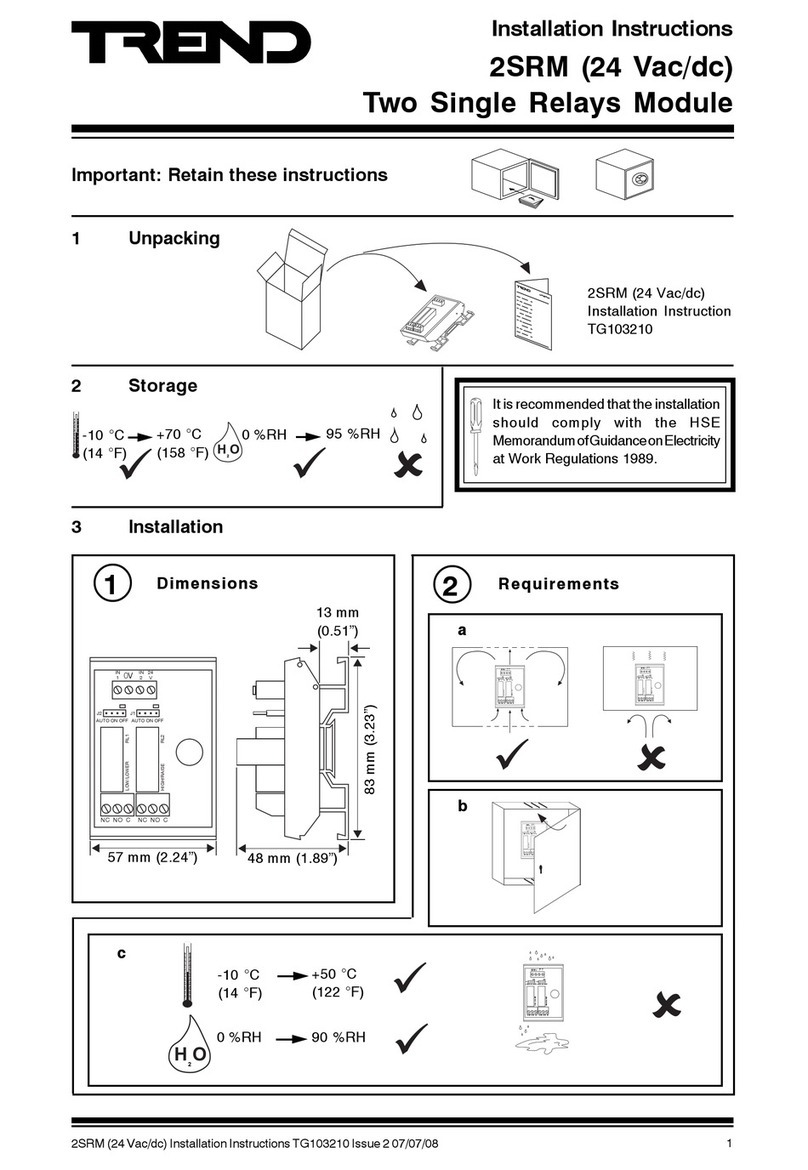
TREND
TREND 2SRM installation instructions
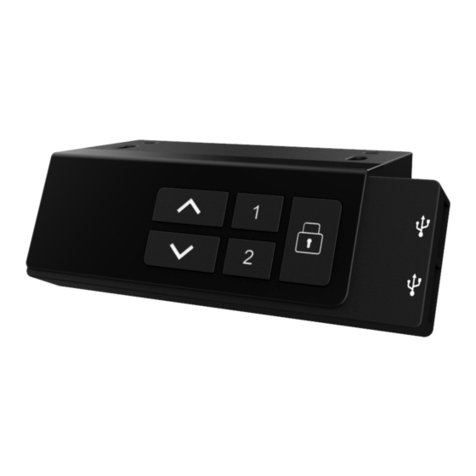
Timotion
Timotion TDH18P user manual

Riello UPS
Riello UPS EnergyManager Installation and configuration
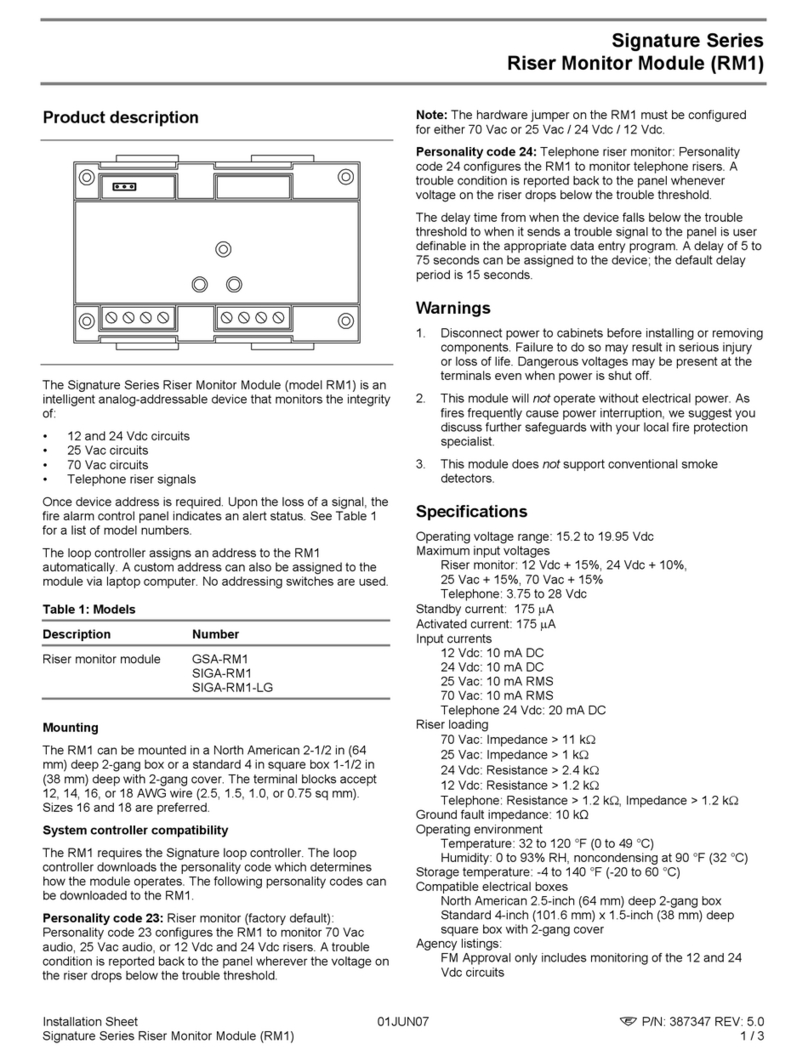
Carrier
Carrier Signature Series Installation sheet
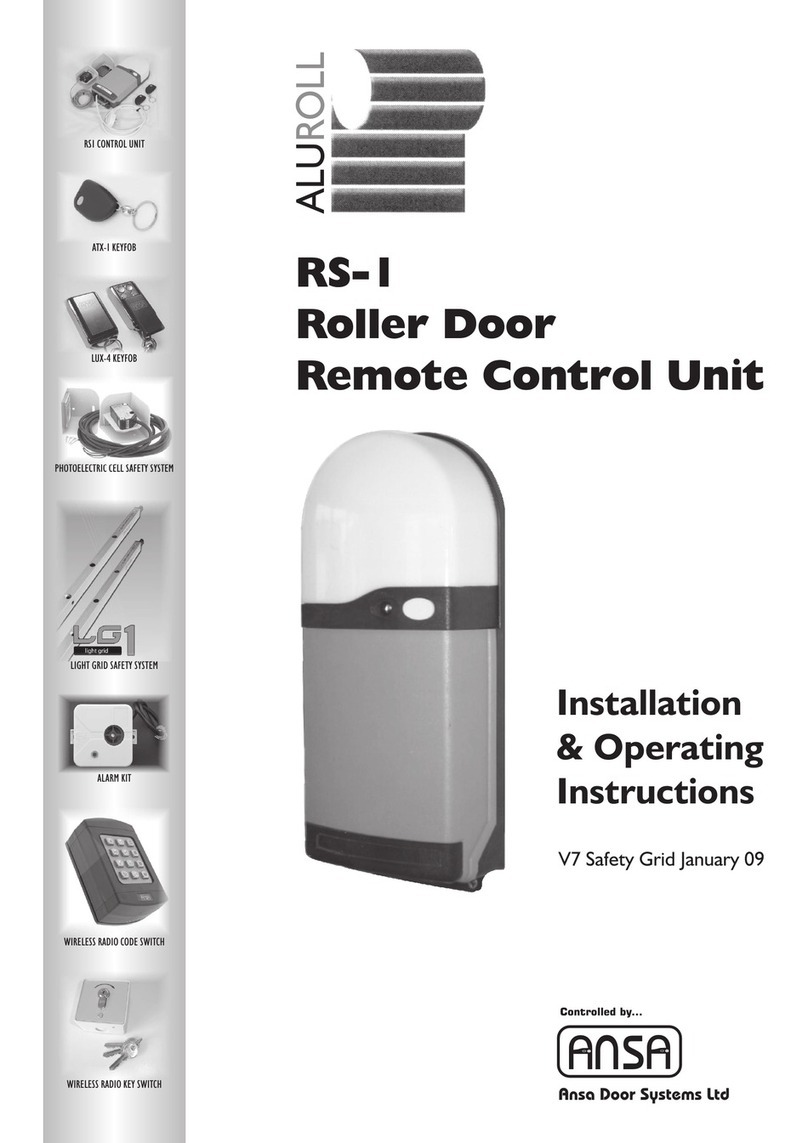
Ansa
Ansa RS-1 Installation & operating instructions
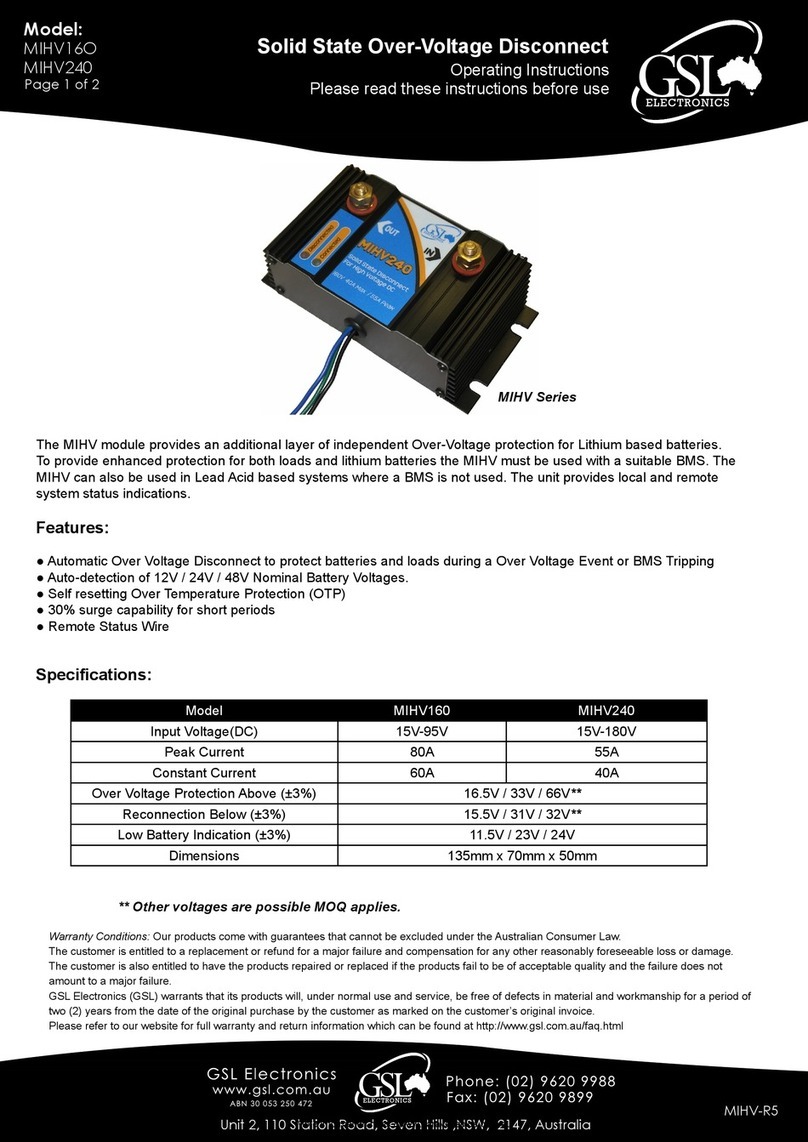
GSL electronics
GSL electronics MIHV16O operating instructions
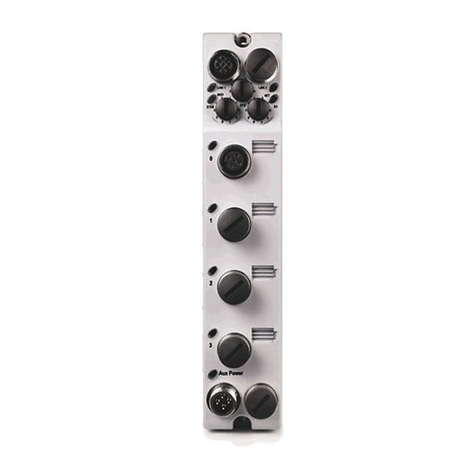
Rockwell Automation
Rockwell Automation ArmorBlock Series user manual
Lexicon
Lexicon TCM-3 Owner's manual and installation guide
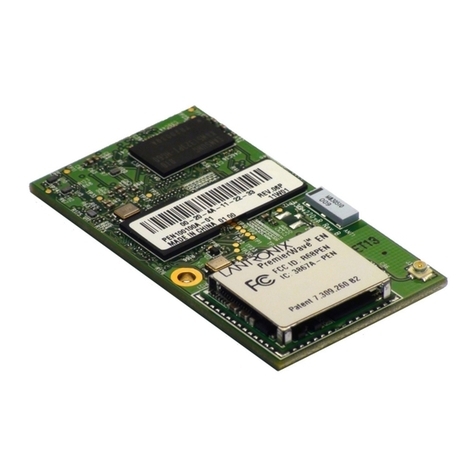
Lantronix
Lantronix PremierWave user guide
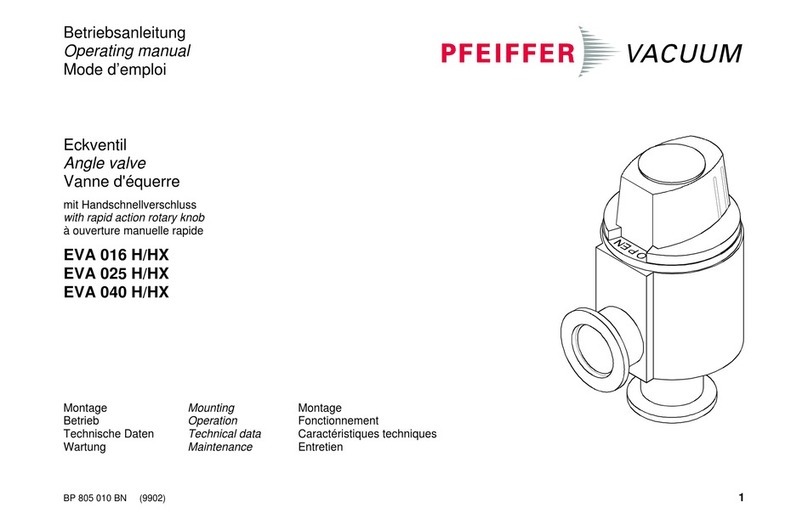
Pfeiffer Vacuum
Pfeiffer Vacuum EVA 016 H operating manual
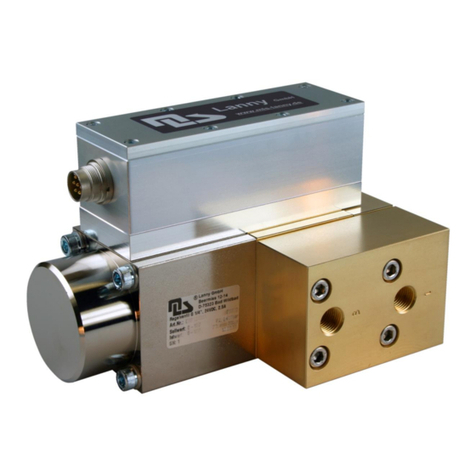
MLS
MLS EHP2B350C BK Series manual

Zenner
Zenner Electronic Data Capture Module Installation and operating instructions

